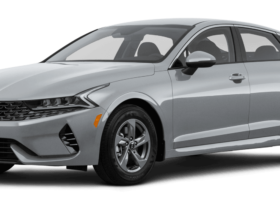The global automotive aftermarket sector was a $390 billion industry in 2020. By 2028, market experts project its worth to reach $529.25 billion.
Those figures prove that more and more vehicle owners are making the switch to non-OEM parts. There are, after all, many benefits to buying car parts from third-party manufacturers.
So, if you’re in the market for car parts yourself, it’s best to learn more about the benefits of aftermarket ones. We listed the top ones below, so be sure to read on.
- More Affordable Than Original Equipment Manufacturer Parts
Aftermarket automotive parts almost always cost less than OEM parts. In many cases, their price can be just about half or even less than their OEM counterparts.
Now, keep in mind that the typical cost of bodywork repairs ranges from $50 to $1,500 or more. About half of that price goes toward parts alone, with labor accounting for the rest.
If you go for all OEM parts, you can expect a bill that’s much higher than if you opt for aftermarket parts. As such, consider investing in quality aftermarket parts to cut down car repair costs.
- Compatibility With More than One Brand
Aftermarket manufacturers design their products to be compatible with multiple automotive brands. For example, quality aftermarket Jeep accessories, like winches, can fit light trucks, too. Moreover, aftermarket lights, performance, and suspension kits can fit various vehicle models.
However, before you buy car parts online or in-store, be sure they’re compatible with your ride. Do this whether you go for aftermarket or OEM parts, as all of them have specifications.
The easiest way to do that is to know the part number of the component you need. These numbers, consisting of alphanumeric characters, are unique identifiers of a specific part. You can find this on a label on most car parts, and from there, use it to search for compatible parts.
So, if you’re not sure how to buy car parts, you can always rely on the part number as your guide.
- Wide Availability
If you’re not sure where to buy car parts that aren’t brand-specific, start with an online search. You can also find them at your local mechanic’s shop or even the nearest gas station. Even the dealership where you bought your car is sure to carry aftermarket parts.
That extensive availability is again thanks to the multi-brand compatibility of aftermarket parts. By contrast, OEM parts are often exclusive to dealerships or specialty body shops.
- Help Prevent Car Maintenance and Repair Delays
Vehicle owners shell out approximately $0.09 per mile on maintaining their rides. So, within a year of driving, say, 12,000 miles, they would’ve spent $1,080 on vehicle upkeep alone.
$1,080 is no joke, which is why some car owners may choose to skip maintenance or delay repairs. Unfortunately, such practices are harmful to the car and dangerous to road users.
Since aftermarket parts are low-cost, they can help you stay on top of maintenance and repairs.
Consider Buying Car Parts from a Third-Party Manufacturer
As you can see, buying car parts exclusively made by OEMs is sure to burn a hole in your pockets. That’s why you should consider going with lower-cost yet quality aftermarket parts. This way, you can keep your ride in tip-top condition and even have spare cash to accessorize it.
Interested in more money-saving tactics when it comes to cars or even your health? Check out our other recent informative guides for more nuggets of wisdom then!









